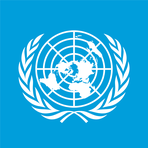The Flames of Conflict: A Region on Edge** **
July 26, 2024, 5:41 am

Location: United States, New York
Employees: 10001+
Founded date: 2002
Total raised: $500M

Location: Switzerland, Geneva, Chambésy
Employees: 5001-10000
Founded date: 1948
** The Middle East is a tinderbox. Recent events have ignited flames of violence, drawing in players from across the region. The air is thick with tension, and the stakes are high. As Israel escalates its military operations, the ramifications ripple far beyond its borders.
On July 20, 2024, Israel launched airstrikes on Hodeida, Yemen, a strategic port city controlled by the Houthi rebels. This marked a significant escalation in the ongoing conflict. The Houthis, backed by Iran, vowed a "huge" retaliation. Their promise echoed through the region, signaling that the fire was not contained. It was spreading.
The airstrikes were a response to a Houthi drone attack that killed one person in Tel Aviv. The cycle of violence spiraled further. Israeli Defense Minister Yoav Gallant warned of more operations if the Houthis dared to retaliate. The flames of conflict were now licking at the edges of Yemen, Lebanon, and Gaza.
In Gaza, the situation is dire. Israeli airstrikes killed at least 15 people, including women and children, in the Bureij refugee camp. The humanitarian crisis deepens. The World Health Organization reported traces of the poliovirus in Gaza's sewage. The specter of disease looms large over a population already battered by war. The conditions are a perfect storm of despair.
Israel's military operations are relentless. Over 38,900 people have died in Gaza since the conflict began. The toll is staggering. Families mourn their losses, clutching small bodies wrapped in white shrouds. The cries of the bereaved echo through the rubble-strewn streets. Each strike brings more sorrow, more destruction.
Prime Minister Benjamin Netanyahu is under pressure. He prepares to meet with U.S. President Joe Biden, seeking support for his military campaign against Hamas. The war began with a brutal assault by Hamas on October 7, 2023, killing 1,200 people in Israel. The hostages taken during that attack remain a point of contention. Families demand action, rallying for a ceasefire that would bring their loved ones home.
The international community watches closely. Mediators from Egypt, Qatar, and the United States are pushing for a phased deal to halt the fighting. Yet, the path to peace is fraught with obstacles. Each airstrike, each retaliatory attack, makes the prospect of resolution seem more distant.
As the conflict escalates, the potential for a wider regional war looms. The Houthis have threatened to open a new front. Their control over Yemen's Red Sea coast gives them strategic leverage. The Israeli military intercepted a missile fired from Yemen, a clear sign that the conflict is spreading. The flames are no longer contained to Gaza.
The humanitarian crisis in Gaza is compounded by the ongoing violence. Water and sanitation services are crumbling. The population of 2.3 million is mostly displaced, living in dire conditions. The World Health Organization warns of "monumental" constraints in responding to the health crisis. The situation is a ticking time bomb.
In the streets of Tel Aviv, protests erupt. Thousands demand the release of hostages held by Hamas. The cries for action resonate with urgency. The Israeli public is weary of the war. They want their loved ones home. They want an end to the violence.
The air is thick with uncertainty. Each airstrike, each retaliatory threat, adds fuel to the fire. The region is on edge, caught in a cycle of violence that seems unending. The Houthis' pledge of retaliation is a stark reminder that the conflict is far from over.
As Netanyahu prepares to address Congress, the world watches. Will he secure the support he needs? Or will the cries for peace drown out the calls for war? The flames of conflict are raging, and the outcome remains uncertain.
In this complex web of violence, the human cost is staggering. Lives are lost, families shattered. The region stands at a crossroads. The path forward is fraught with peril. The flames of conflict threaten to engulf all in their path.
The Middle East is a landscape of turmoil. Each day brings new challenges, new tragedies. The world holds its breath, hoping for a glimmer of peace amid the chaos. But for now, the flames continue to burn. The conflict rages on, leaving destruction in its wake. The future remains uncertain, shrouded in smoke and despair.
On July 20, 2024, Israel launched airstrikes on Hodeida, Yemen, a strategic port city controlled by the Houthi rebels. This marked a significant escalation in the ongoing conflict. The Houthis, backed by Iran, vowed a "huge" retaliation. Their promise echoed through the region, signaling that the fire was not contained. It was spreading.
The airstrikes were a response to a Houthi drone attack that killed one person in Tel Aviv. The cycle of violence spiraled further. Israeli Defense Minister Yoav Gallant warned of more operations if the Houthis dared to retaliate. The flames of conflict were now licking at the edges of Yemen, Lebanon, and Gaza.
In Gaza, the situation is dire. Israeli airstrikes killed at least 15 people, including women and children, in the Bureij refugee camp. The humanitarian crisis deepens. The World Health Organization reported traces of the poliovirus in Gaza's sewage. The specter of disease looms large over a population already battered by war. The conditions are a perfect storm of despair.
Israel's military operations are relentless. Over 38,900 people have died in Gaza since the conflict began. The toll is staggering. Families mourn their losses, clutching small bodies wrapped in white shrouds. The cries of the bereaved echo through the rubble-strewn streets. Each strike brings more sorrow, more destruction.
Prime Minister Benjamin Netanyahu is under pressure. He prepares to meet with U.S. President Joe Biden, seeking support for his military campaign against Hamas. The war began with a brutal assault by Hamas on October 7, 2023, killing 1,200 people in Israel. The hostages taken during that attack remain a point of contention. Families demand action, rallying for a ceasefire that would bring their loved ones home.
The international community watches closely. Mediators from Egypt, Qatar, and the United States are pushing for a phased deal to halt the fighting. Yet, the path to peace is fraught with obstacles. Each airstrike, each retaliatory attack, makes the prospect of resolution seem more distant.
As the conflict escalates, the potential for a wider regional war looms. The Houthis have threatened to open a new front. Their control over Yemen's Red Sea coast gives them strategic leverage. The Israeli military intercepted a missile fired from Yemen, a clear sign that the conflict is spreading. The flames are no longer contained to Gaza.
The humanitarian crisis in Gaza is compounded by the ongoing violence. Water and sanitation services are crumbling. The population of 2.3 million is mostly displaced, living in dire conditions. The World Health Organization warns of "monumental" constraints in responding to the health crisis. The situation is a ticking time bomb.
In the streets of Tel Aviv, protests erupt. Thousands demand the release of hostages held by Hamas. The cries for action resonate with urgency. The Israeli public is weary of the war. They want their loved ones home. They want an end to the violence.
The air is thick with uncertainty. Each airstrike, each retaliatory threat, adds fuel to the fire. The region is on edge, caught in a cycle of violence that seems unending. The Houthis' pledge of retaliation is a stark reminder that the conflict is far from over.
As Netanyahu prepares to address Congress, the world watches. Will he secure the support he needs? Or will the cries for peace drown out the calls for war? The flames of conflict are raging, and the outcome remains uncertain.
In this complex web of violence, the human cost is staggering. Lives are lost, families shattered. The region stands at a crossroads. The path forward is fraught with peril. The flames of conflict threaten to engulf all in their path.
The Middle East is a landscape of turmoil. Each day brings new challenges, new tragedies. The world holds its breath, hoping for a glimmer of peace amid the chaos. But for now, the flames continue to burn. The conflict rages on, leaving destruction in its wake. The future remains uncertain, shrouded in smoke and despair.